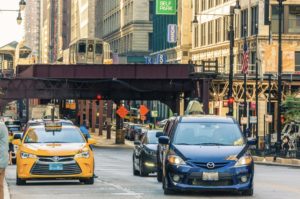PG&E Put Profits Over Wildfire Safety, Judge Says
The California utility company is scheduled to submit a wildfire mitigation plan on Feb. 6, and the judge will decide what, if any, additional requirements to order.SAN FRANCISCO—A U.S. judge berated Pacific Gas & Electric Corp. on Wednesday, accusing the nation’s largest utility of enriching shareholders instead of clearing trees that can fall on its power lines and start fires and making “excuses” to avoid turning off electricity when fire risk is high.
Judge William Alsup in San Francisco did not immediately order PG&E to take any of the dramatic measures he has proposed to try to stop more wildfires.
But he warned that he was not ruling out at least some new requirements on the company if it did not come up with a plan to “solve” the problem of catastrophic wildfires in California.
“To my mind, there’s a very clear-cut pattern here: that PG&E is starting these fires,” Alsup said. “What do we do? Does the judge just turn a blind eye and say, ‘PG&E continue your business as usual. Kill more people by starting more fires.'”
Alsup is overseeing a criminal conviction against PG&E on pipeline safety charges stemming from a 2010 gas line explosion in the San Francisco Bay Area that killed eight people and destroyed 38 homes.
He proposed earlier this month as part of PG&E’s probation that it remove or trim all trees that could fall onto its power lines in high-wind conditions and shut off power when fire is a risk regardless of the inconvenience to customers or loss of profit. Alsup said his goal was to prevent PG&E equipment from causing any wildfires during the 2019 fire season.
PG&E shot back in a court filing last week that the judge’s proposals would endanger lives and could cost as much as $150 billion to implement.
Kevin Orsini, an attorney for the company, said PG&E shared the judge’s concerns about wildfire and was working to reduce risk. But there weren’t enough qualified tree trimmers, and shutting off power would have “repercussions that affect the community,” he said.
Power cutoffs impact first responders, critical medical care and phone service and are potentially fatal, the utility said in its court filing.
“PG&E is facing a fundamental problem. The state is facing a fundamental problem,” Orsini said.
PG&E announced last year that it would cut off power preemptively when fire danger was high and did so for the first time in October for about 60,000 customers in Northern California. The move prompted complaints and demands for reimbursement from some customers.
Attorneys for wildfire victims, California regulators and the U.S. Department of Justice also spoke at Wednesday’s hearing.
Alsup was also critical of the California Public Utilities Commission, accusing it of working slowly and using former PG&E employees. The judge later apologized for those comments but still questioned how so many fires broke out under the CPUC’s watch.
An attorney with the CPUC, Christine Hammond, said she couldn’t comment on fires that were still under investigation. But she said wildfires in California were an incredible challenge that involved factors such as climate change.
The utility’s return to a U.S. courtroom came a day after it declared bankruptcy in the face of billions of dollars in potential liability from wildfires in California in 2017 and 2018. PG&E in that case is seeking another judge’s approval to obtain up to $5.5 billion in financing and pay $130 million in bonuses to thousands of employees.
Alsup only briefly mentioned the bankruptcy case during Wednesday’s hearing. Filing for bankruptcy generally does not put criminal proceedings on hold, so PG&E’s Chapter 11 reorganization may not allow it to avoid any orders issued by Alsup.
The judge found separately that PG&E violated its probation for failing to notify probation officials that a prosecutor’s office had opened a full investigation into the utility’s role in a 2017 California wildfire. Alsup said he would set a sentencing date later.
Kate Dyer, another attorney for PG&E, said the company had communicated with probation officials and didn’t hear until recently that it had not met their expectations.
Alsup said he would wait to see a wildfire mitigation plan PG&E was scheduled to submit to the CPUC on Feb. 6 before deciding what, if any, additional requirements to order.
PG&E is facing hundreds of lawsuits from victims of wildfires in 2017 and 2018, including the nation’s deadliest wildfire in a century.
That blaze in November killed at least 86 people and destroyed 15,000 homes in and around the Northern California town of Paradise. The cause is still under investigation, but suspicion fell on PG&E after it reported power line problems nearby around the time the fire broke out.
Your support matters…Independent journalism is under threat and overshadowed by heavily funded mainstream media.
You can help level the playing field. Become a member.
Your tax-deductible contribution keeps us digging beneath the headlines to give you thought-provoking, investigative reporting and analysis that unearths what's really happening- without compromise.
Give today to support our courageous, independent journalists.





You need to be a supporter to comment.
There are currently no responses to this article.
Be the first to respond.